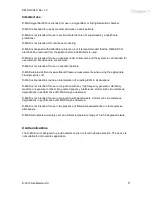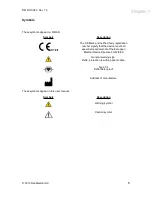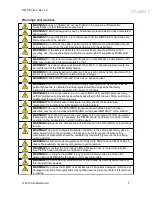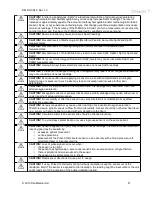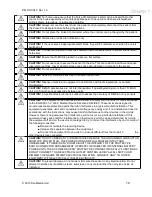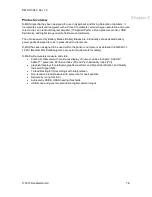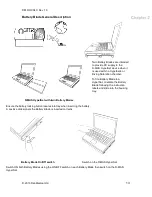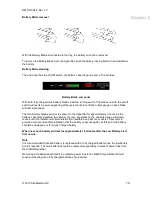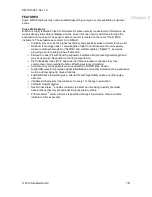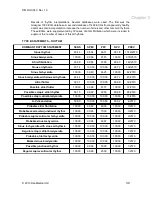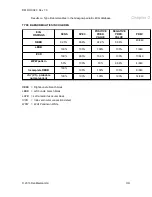
DM DOC 040 Rev 1.0
FUNCTIONAL SATURATION
The D-MAS is calibrated to measure and display functional saturation (SpO2): the amount of
oxyhemoglobin expressed as a percentage of the hemoglobin that is available to transport
oxygen. Note that carboxyhemoglobin and methemoglobin are not capable of transporting
oxygen, but is recognized as oxygenated hemoglobin by conventional pulse oximetry.
MEASURED VS. CALCULATED SATURATION
SpO2, SpMet and SpCO measurements that can be obtained from D-MAS are commonly
compared to invasive measurements obtained from blood gas samples. When comparing
invasive and noninvasive measurements and interpreting values, caution should be used, as the
calculated values obtained from the blood gas sample may differ from the SpO2, SpMet and
SpCO measurements of the Pulse CO-Oximeter. In the case of SpO2, different results are usually
obtained from the arterial blood gas sample if the calculated measurement is not appropriately
corrected for the effects of variables that shift the relationship between the partial pressure of
oxygen (PO2) and saturation, such as: pH, temperature, the partial pressure of carbon dioxide
(PCO2), 2,3-DPG, and fetal hemoglobin. In the case of SpMet and SpCO, in addition to the
effects of temperature and pH, different results are also expected if concentration of
methemoglobin in the blood gas sample are abnormal (less than 90% for arterial oxygen
saturation, and greater than 2% for methemoglobin concentration). As blood gas samples are
usually taken over a period of 20 seconds (the time it takes to draw the blood) a meaningful
comparison can only be achieved if the oxygen saturation, carboxyhemoglobin and
methemoglobin concentration of the patient are stable and not changing over the period of time
that the blood gas sample is taken.
SIGNAL EXTRACTION TECHNOLOGY FOR SpO2 MEASUREMENTS
Signal Extraction Technology’s signal processing differs from conventional pulse oximeters.
Conventional pulse oximeters assume that arterial blood is the only blood moving (pulsating) in
the measurement site. During patient motion, however, the non-arterial blood also moves,
causing conventional pulse oximeters to read low values, because they cannot distinguish
between the arterial and venous blood movement (sometimes referred to as noise). Pulse
oximetry utilizes parallel engines and adaptive digital filtering. Adaptive filters are powerful
because they are able to adapt to the varying physiologic signals and/or noise and separate them
by looking at the whole signal and breaking it down to its fundamental components. The signal
processing algorithm, Discrete Saturation Transform® (DST®) reliably identifies the noise,
isolates it and, using adaptive filters, cancels it. It then reports the true arterial oxygen saturation
for display on the monitor.
SpMet AND SpCO MEASUREMENTS DURING PATIENT MOTION
The D-MAS displays measurements of SpMet and SpCO during patient motion. However,
because of the changes in the physiological parameters such as blood volume, arterial-venous
coupling, etc. that occur during patient motion, the accuracy of such measurements may not be
readable during excessive motion.
© 2013 DanMedical Ltd
19

